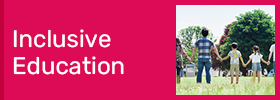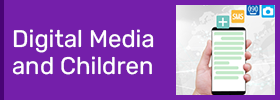At HILLOCK, children regularly use digital devices such as laptops and tablets. These are personal devices prepared by each family. Some children take them home every day, while others utilize the cloud service at home and leave their devices at school.
Even children who cannot type when they first enroll will be able to type fluently after a month of using the devices. Adults tend to think, "First, they need to learn Romaji (Romanized Japanese)...," but such an order is unnecessary. Children's learning occurs "simultaneously." In fact, simultaneous learning is better. Being able to type leads to greater freedom for the child. If they can type, they can look up things they like on the internet. If they can type, they can exchange messages with friends. If they can type, it's just cool. There are various motivations to "want to be able to do it!"
On the other hand, the motivation to "want to write in Romaji" is hard to instill. It's difficult to imagine situations in daily life where Romaji is used, and it lacks the coolness and utility of English. Therefore, learning Romaji while practicing typing allows children to acquire it smoothly and without stress.
This idea is not limited to typing. As adults, we often think it's best to "start with the basics." School curriculums are a prime example of this. While it makes sense from the perspective of the average ease of learning for children, it's quite a hard method when it comes to whether children can engage in learning with self-motivation. Inevitably, it leads to the incorporation of evaluations, competition, and game-like elements. This sends the wrong messages such as "winning in competition is valuable" and "mistakes are shameful."
In sports and art, the emphasis is on "trying it out" first. In soccer, you play matches and then practice shooting or do strength training as needed. In piano, you start by trying to play the piece you want, and then practice Bayer exercises to be able to play the piece well. The motivation is to "play well in a match" or "play that piece well someday." This shift in approach to subject learning is what we call inquiry-based learning.
Returning to the topic, many visitors to HILLOCK are surprised to see children handling digital devices as naturally as stationery. Some say, "It's a necessary skill for surviving in the time and age to come." While that may be true, that's not our aim at HILLOCK.
Today, digital devices are not confined to the small scope of business skills. They are indispensable in almost all aspects of life, from everyday research and entertainment to interactions with government, shopping, and communication with friends. I view this global change positively. Historically, information was limited to the privileged classes, with unbridgeable gaps in access due to social class, ability, and geographic factors. Today, almost everyone can access and exchange information in a way that suits them. Uniformly denying children the use of such technological advancements simply because they are children seems questionable from a child rights perspective.
Some people keep children away from digital devices, saying "it is dangerous" or "children don't have sufficient skills." But can we say that adults have sufficient skills to use them effectively? Most adults have not learned digital skills in a systematic way. We've become reasonably proficient through repeated failures and accumulated experience. If that's the case, shouldn't we give children the right to learn as well?
The reason HILLOCK actively encourages children to use digital devices is that it increases their learning options. With a device, even a child who struggles with writing can express their opinions. A child who is reluctant to speak in front of others can communicate through text, drawings, or voice. A child who learns slowly can choose the most suitable materials from a vast array and continue learning without stress.
No one knows what society or work will be like in 10 years. We can't confidently say that typing will be an essential skill then, and it's entirely possible that the ability to handle digital devices may no longer be necessary. Currently, the best way to predict the unseen future is to capture the current, up-to-date state of society. However, all this is a byproduct of learning. Rather than worrying about investments and immediate gains, the first priority should be to stimulate the motivation to "want to learn" in the children in front of us and create an environment where they can feel "learning is fun!" HILLOCK is building a digital environment to achieve this.















